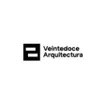
Situaciones de Estar Pavilion
ARCHITECTS
Veintedoce Arquitectura
LEAD ARCHITECTS
Beatriz Villegas, Ángel Verduzco, Giancarlo Reyes
MANUFACTURERS
Estructuras y Perfiles, Maderas Unión, Telas Parisina
MAIN CONTRACTOR
Cirilo Zavala
WORK SUPERVISION
Gissel Mariscal, Javier Mireles, Fernando Preciado
DRAWING
Ivan Ramirez, Sofia Aguirre, Lesly Flores
CONCEPT DESIGN
INSITE
EDITOR AND CURATOR
Andrea Torreblanca
DESIGN TEAM
Alexia Hernández, Sofia Aguirre
YEAR
2023
LOCATION
Mexicali, Mexico
CATEGORY
Pavilion
Within the framework of its curatorial project The Sedimentary Effect, the cultural organization INSITE invited us to collaborate on its third chapter A Timeless Way of Building, based on the book by Viennese architect Christopher Alexander (1979) and the experimental social housing known locally as El Sitio (1976) in Mexicali, Mexico, through the commissioning of a pavilion with the specific intention of projecting Christopher Alexander's legacy.
In what used to be the "Builder's Yard" of El Sitio and most recently a parking lot, stands Situations of Being; a pavilion that facilitated creative exchanges and social dynamics during A Timeless Way of Building,
an event curated by INSITE in which architects, philosophers, and urbanists from the region and beyond participated in conversations, in light of Alexander's theories, about housing production, communal living, architectural philosophy, and urgent urbanism in border cities.
The pavilion had brief and context specific needs: a dynamic walkthrough of El Sitio, screenings, and conversations; for which thermal comfort was necessary due to Mexicali's hot summer climate.
We consulted Alexander’s book "A Pattern Language" (1977) and noted that both programmatic and contextual forces could be translated into its patterns. We then defined the patterns, or situations of being, that the pavilion would facilitate:
94 Sleeping in Public
106 POSITIVE OUTDOOR SPACE
119 ARCADES
171 TREE PLACES
176 GARDEN SEAT
243 SITTING WALL
244 CANVAS ROOFS
With these behavior and spatial patterns in mind, we envisioned a pavilion that would serve the many situations of being that could take place:
to sit, to lie down, to observe, to see the breeze, to feel awe, to share, to listen, to really listen, to dance, to daydream, to sleep, to eat…
Placed in the center of the builder's yard, with Alexander´s housing building situated to the west and wide desert tree canopies to the east, is a circle that contains offsets wide enough to accommodate the considered behavioral and spatial patterns.
The concentric circles are then stretched to accommodate 120 persons and consequently split longitudinally to position a long communal table on its longitudinal axis.
The table seats more persons than needed for the conversation's participants to promote a casual and less hierarchical interaction between exponents and listeners. The predicted situations of being needed different heights for their support.
The bands of its floor plan are divided into modules; consequently, a height is assigned to each module.
These are removed where needed to facilitate circulation towards the garden, entrance, and housing building. A band stretches well into the south garden, offering a quiet place to seat beneath the trees (pattern 171).
Above the table stands a structure from which yellow fabric hangs. The fabric forms arches reminiscent of the wooden casted vaults utilized by Alexander in El Sitio.
The fabric is pulled down where needed to offer vertical shade in the evening hours.
The structure contrasts the building with cannary yellow, a color familiar to the desert flora. The modules are pine wood structures, with canary yellow accents.
During these three days, the builder's yard once again hosted a community that shared views, hopes, and ideas on community-driven design and human dwelling, an echo of the conversations initiated by Alexander himself in 1972 with students and teachers.







































